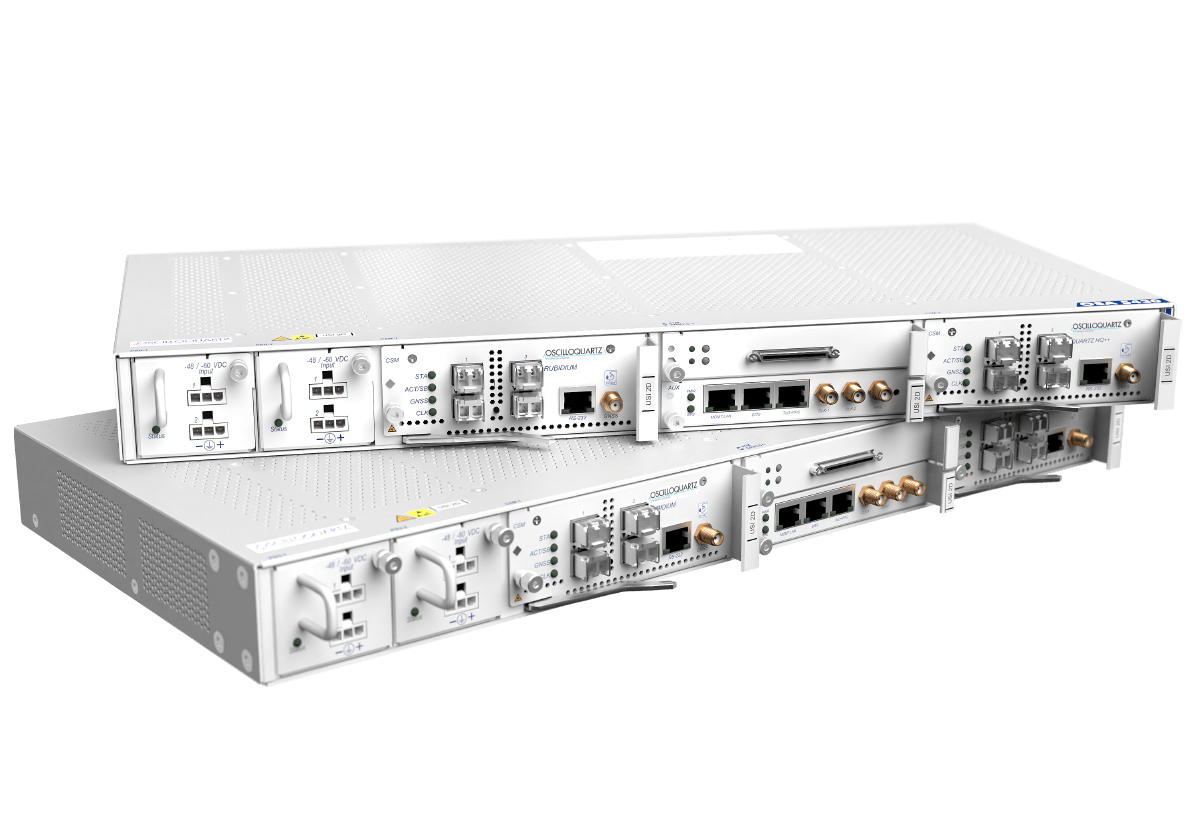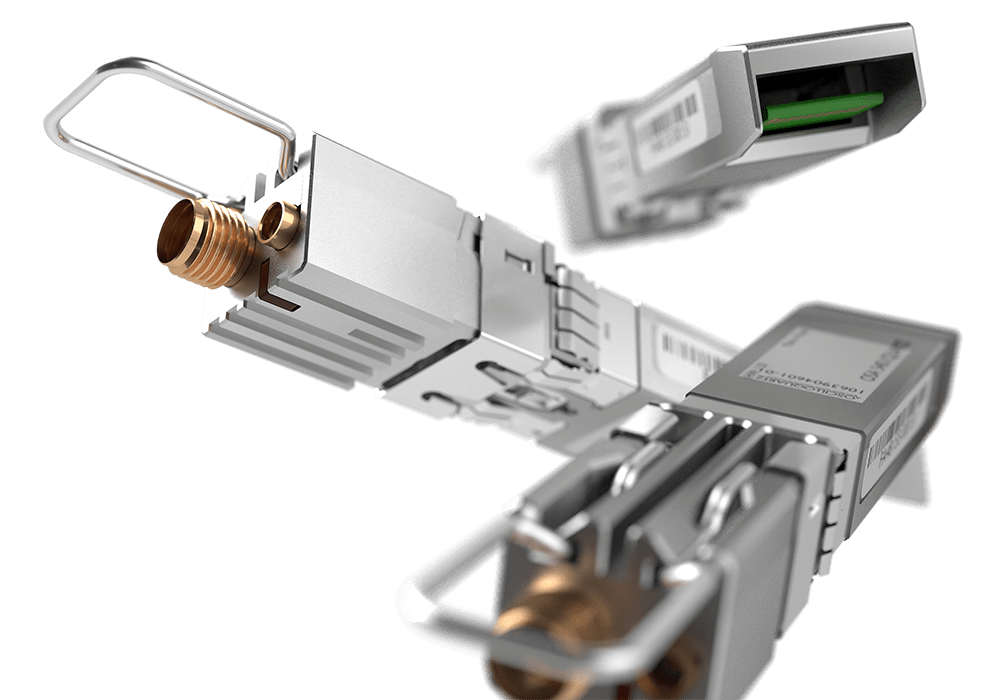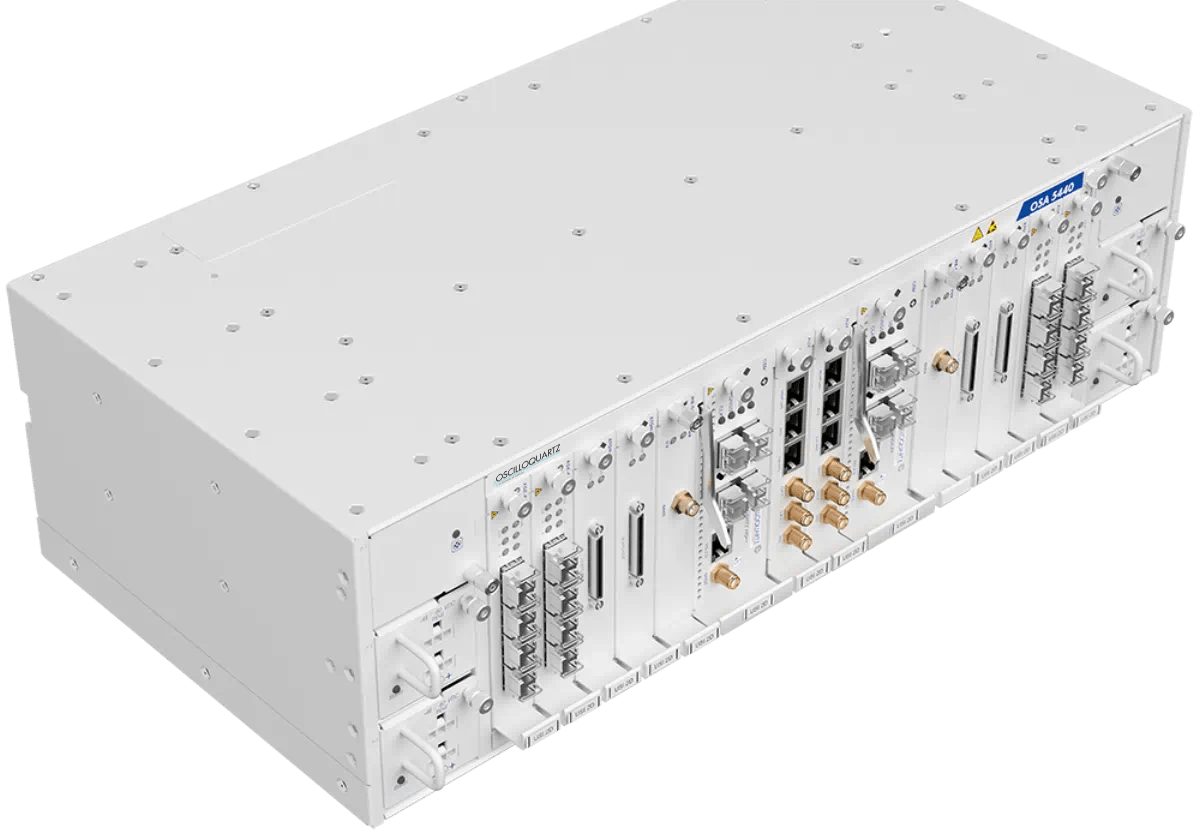What’s the difference between frequency and phase synchronization?
Frequency vs. phase
Picture a radio base station sending radio frames while your smartphone receives them, allowing one frame per millisecond at the input port or antenna. Now imagine a second base station also sending radio frames once a millisecond to the receiving smartphone. If they arrive at the same time as those from the first base station, they will block each other. To avoid this, the second base station must transmit frames at a later time or at a different phase within the millisecond frame and compensate for the different propagation delays. And that’s why shared media networks require strict phase synchronization.
A new phase for network timing
Timing information distributed through next-gen networks must be precisely frequency- and phase-aligned for advanced applications to function.

Our OSA suite of grandmaster clocks support PTP, NTP and SyncE, providing precise frequency and phase information.
Precision challenges
New mobile radio technologies require phase synchronization to base stations and small cells with an accuracy of a few hundred nanoseconds.

Phase and frequency in sync networks
Master sources using Coordinated Universal Time (UTC) as a reference generate various signals for communicating time information to other devices. These include one-second pulses, which they can transmit throughout the network. Slave sources then copy this signal and redistribute it. Alternatively timestamped packets are used to deliver synchronization information over packet networks. Both, LTE-A and 5G networks need phase and frequency to be far more precisely aligned to accommodate extremely data-intensive applications.
Enhanced accuracy
Precision Time Protocol (PTP) is the new standard that guarantees both phase and frequency alignment across the entire packet network.

Time for the future
Adtran’s Oscilloquartz suite of scalable synchronization solutions is helping operators transition away from legacy frequency synchronization networks and embrace the possibilities of 5G and the IoT in a cost-effective way. Our OSA suite of grandmaster clocks support PTP, NTP and SyncE, providing precise frequency and phase information. Our enhanced primary reference time clock (ePRTC) solutions distribute and assure incredibly accurate timing, even in the event of GNSS failure. They also feature Syncjack™ technology, which operators can use to remotely monitor phase accuracy, ensuring backhaul infrastructure remains fully in sync at all times.
